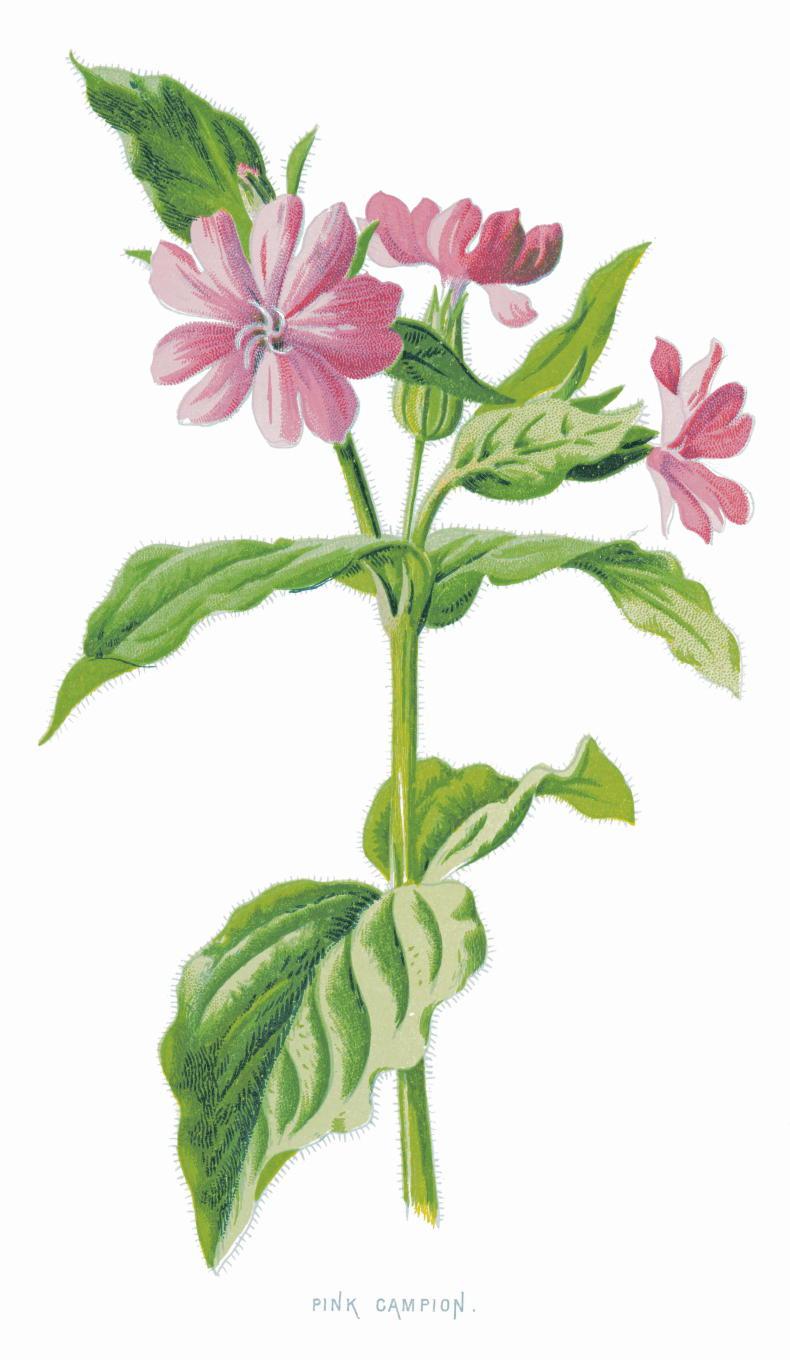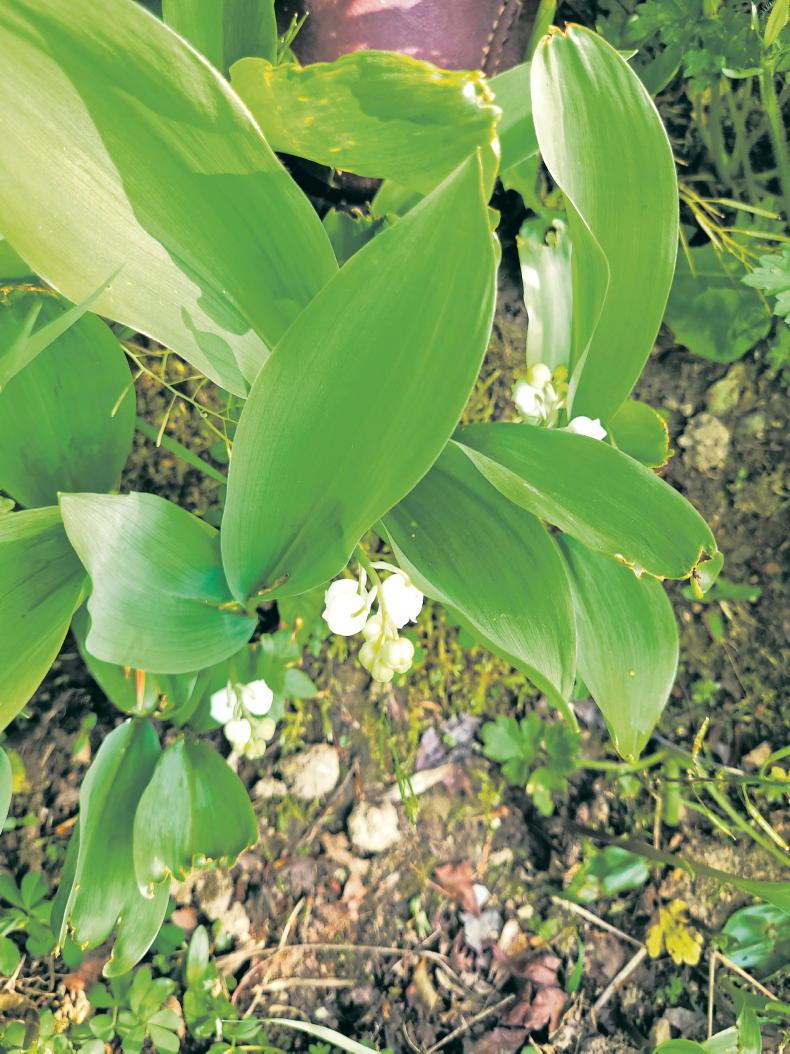The lily-of-the-valley is native to most of the cooler parts of the Northern Hemisphere, but not to Ireland.
There are a few instances of where plants discarded from gardens have survived as garden escapes. Convallaria is considered to have its own plant family, the Convallariaceae
In its natural habitat, it grows in light woodland, scrubby areas and mountain meadows. It is extremely tough and resists cold very well, although it looks delicate.
It tolerates light shade well and thrives where it gets good light or sunshine for part of the day.
The valley part of the name refers to its tendency to grow in sheltered places, even at altitude.
It has been cultivated since the Middle Ages, and probably before, sometimes used for medicinal purposes, especially as a heart stimulant.
However, the same plant chemicals that allow it to affect the function of the heart can also lead to severe poisoning if eaten.
This is very unlikely to happen in a garden but if red berries are produced they should be removed if small children have access.
Growing lily-of-the valley
Being a woodland native, lily-of-the-valley thrives in woodland conditions of deep, humusy soil that does not dry out, but does not become water-logged in winter.
It likes an element of shade but can grow well in the open too, and needs some shelter for its broad, arching leaves.
The rolled-up leaves emerge in spring and in late spring and early summer, the flower stem pushes up through the leaves.
This carries up to twenty nodding white bells. It is a long-lasting flower and very sweetly scented. There is a pretty pink form too.
Its short stems and broad leaves make it a perfect flower for a posey and it has been traditionally much used in bridal wreaths.
The crowns can be lifted in autumn and potted up for forcing into flower early in a greenhouse, and the scented flowers can be brought indoors.
Difficulty in establishing lily-of-the-valley was quite common because the plants used to be sold bare-root and they would have become tired by being out of the ground for too long.
But when it does get well established, pot-grown, in the right conditions, it can spread vigorously and make large clumps.
Red Campion
The pink catchfly, also known as campion, is fairly common in gardens in the west and north of the country.
It used to be popular in country gardens, although most people who grow it do not have a name for it.
This catchfly is also known as red campion or Silene dioica, and it is actually a wild native flower, but the garden form is not quite the same.
It gets the name ‘catchfly’ because of its sticky flower stems that trap small insects. The wild plant is more upright with flowers more spread along the flower stems.
It can be seen by the roadside in some parts of the country, growing in grassy banks, flowering in early to mid-summer.

There is a pretty white wild campion that is found in the centre of the country and the southeast. When the two wild species overlap, the offspring may have pale pink flowers.
The garden form is quite different to the wild form — it has dense rosettes of hairy broad leaves at ground level and it makes a very effective ground cover.
While the garden campion is easy to grow, it can also die out quite suddenly due to a very heavy infestation of greenflies on the backs of the older leaves down in the rosettes.
These can build up to huge numbers and draw all the sap out of the plant causing it to collapse and wither.
The plants can also get a form of downy mildew that causes a soft rotting of the leaves and stems close to the soil level.
Both of these problems tend to occur on plants older than a few years, and it rarely happens when the plants are kept vigorous by dividing them every few years.
If you come across this plant for sale, which is more likely at a bring-and-buy sale, than at a garden centre, then pick it up.
Or if you see it flowering these days in a garden, ask the owner for a bit of it - that is probably how they got it to start with!
Flowers
Bedding plants can be planted now as the risk of frost is now minimal. So too containers can be potted up. Mix half and half garden soil with compost either home-made or bought. This ensures good rooting and greatly reduces vine weevil infestation.
Lawns
After a relatively cold, late spring, grass has grown well and lawns have perked up. Grass growth has been a bit-stop-start, and the lawn should be fed if it start go off-colour. Continue mowing, the heaviest mowing of the year will tail off fairly soon.
Fruit, vegetables and herbs
Plant out tender vegetables such as sweet corn, outdoor tomatoes and runner beans in the colder parts of the country. Repeat-sow vegetables sown earlier in the year, such as lettuce, peas and carrots. Thin out vegetables that have reached suitable size.
Trees, shrubs and roses
Prune early summer shrubs as they go out of flower, if they are too big or need shaping. It is best to thin out shrubs rather than shorten back every branch. Thinning of branches achieves a size reduction but does not change the shape of the shrub.
Greenhouse and house plants
Continue to feed greenhouse plants strongly and to water well. Plant out tomatoes, chilli peppers, cucumbers and sweet peppers as soon as possible, if not already done because these need to make rapid growth now. House plants can be re-potted now.






 This is a subscriber-only article
This is a subscriber-only article









SHARING OPTIONS: